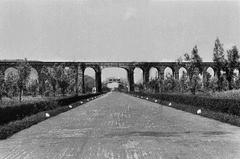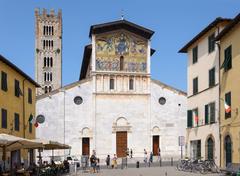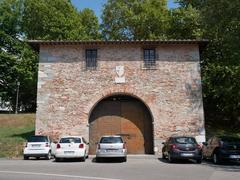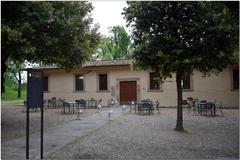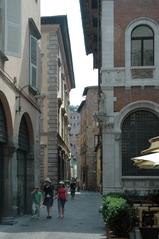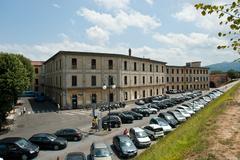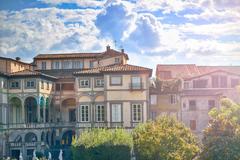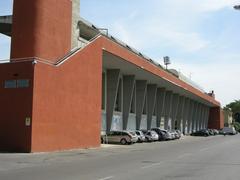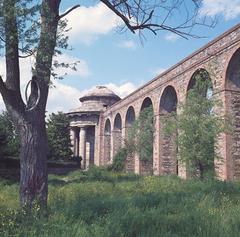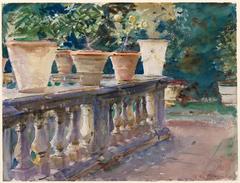Visiting Villa Belvedere in Lucca: Hours, Tickets, History, and Tips
Date: 31/07/2024
Introduction
Villa Belvedere, located in the picturesque region of Lucca, Italy, stands as a testament to Tuscany’s rich historical and cultural tapestry. This 17th-century villa, with its architectural evolution from Renaissance to Baroque styles, reflects the changing tastes and artistic trends over the centuries. Initially commissioned by a noble family, the villa has seen numerous ownership transitions, each leaving a distinct mark on its grandeur. Today, Villa Belvedere is a sought-after destination for tourists, offering an immersive experience into the historical and cultural heritage of Lucca. Visitors can explore its well-preserved architecture, lush gardens, and period furnishings, all while enjoying modern amenities. This comprehensive guide aims to provide detailed insights into Villa Belvedere’s history, architectural significance, visitor information, travel tips, and nearby attractions, ensuring a memorable visit to one of Lucca’s historical gems. For more information and to plan your visit, check out the official Villa Belvedere website and follow their social media channels for updates and special offers.
Table of Contents
- [Introduction](#introductionintroduction)
- [Origins and Early History](#origins-and-early-historyorigins-and-early-history)
- [Architectural Evolution](#architectural-evolutionarchitectural-evolution)
- [Ownership Transitions](#ownership-transitionsownership-transitions)
- [19th Century to Modern Era](#19th-century-to-modern-era19th-century-to-modern-era)
- [Recent Developments](#recent-developmentsrecent-developments)
- [Visitor Information](#visitor-informationvisitor-information)
- [Visiting Hours and Tickets](#visiting-hours-and-ticketsvisiting-hours-and-tickets)
- [Guided Tours and Special Events](#guided-tours-and-special-eventsguided-tours-and-special-events)
- [Travel Tips and Nearby Attractions](#travel-tips-and-nearby-attractionstravel-tips-and-nearby-attractions)
- [Accessibility](#accessibilityaccessibility)
- [Nearby Attractions](#nearby-attractionsnearby-attractions)
- [Dining](#diningdining)
- [Cultural Significance](#cultural-significancecultural-significance)
- [Role in Modern Tourism](#role-in-modern-tourismrole-in-modern-tourism)
- [Conclusion](#conclusionconclusion)
- [Frequently Asked Questions (FAQ)](#frequently-asked-questions-faqfrequently-asked-questions-faq)
Origins and Early History
Villa Belvedere’s origins date back to the Renaissance period, a time when the region was flourishing under the influence of art, culture, and architecture. The initial structure was constructed in the late 16th century, commissioned by a prominent noble family of Lucca. This period marked the beginning of the villa’s long-standing association with the aristocracy and its role as a symbol of wealth and power.
Architectural Evolution
The architectural style of Villa Belvedere has evolved significantly over the centuries. Initially designed in the Renaissance style, the villa underwent several modifications and expansions. In the 17th century, it was renovated to include Baroque elements, reflecting the changing tastes and artistic trends of the time. The addition of ornate facades, grand staircases, and intricate frescoes transformed Villa Belvedere into a quintessential example of Baroque architecture in Tuscany.
Ownership Transitions
Throughout its history, Villa Belvedere has changed hands numerous times, each new owner leaving their mark on the estate. In the 18th century, the villa was acquired by the influential Buonvisi family, known for their patronage of the arts and contributions to the cultural landscape of Lucca. The Buonvisi family undertook extensive renovations, adding luxurious gardens and expanding the villa’s living quarters to accommodate their growing social gatherings and events.
19th Century to Modern Era
The 19th century brought significant changes to Villa Belvedere. Following the abdication of Carlo Ludovico of Bourbon in 1847, Lucca’s political landscape shifted, and the villa eventually came into the possession of the King of Italy. This period saw the villa being used for various state functions and official events, further cementing its status as a landmark of historical importance.
In the early 20th century, the villa was purchased by Count and Countess Pecci-Blunt in 1923. They commissioned a comprehensive restoration of the park and gardens, aiming to blend tradition with innovation. This restoration project was pivotal in preserving the villa’s historical integrity while introducing modern elements that enhanced its aesthetic appeal (Discover Tuscany).
Recent Developments
In 2015, Villa Belvedere faced a new chapter in its storied history when it was bought by a young Swiss couple. Despite the estate being in a state of neglect, the new owners accepted the challenge of restoring Villa Belvedere to its former glory. Their efforts have been instrumental in reviving the villa, making it a sought-after venue for public events and private celebrations (Discover Tuscany).
Visitor Information
Visiting Hours and Tickets
Villa Belvedere is typically open from March to November, with daily visiting hours from 10:00 AM to 6:00 PM. Given the villa’s popularity, it is recommended to book tickets in advance to avoid long queues and ensure a seamless experience. Ticket prices vary depending on the season and any special events taking place. For detailed information on ticket prices and booking, visitors should check the official Villa Belvedere website (Discover Tuscany).
Guided Tours and Special Events
Guided tours are available and highly recommended for those who wish to gain deeper insights into the villa’s history and architectural features. Villa Belvedere also hosts a variety of special events throughout the year, including cultural festivals, art exhibitions, and private functions. Visitors should consult the official website for the schedule of upcoming events.
Travel Tips and Nearby Attractions
Accessibility
The villa is accessible by car, and there is ample parking available on-site. Public transportation options are also available, with regular bus services from Lucca city center.
Nearby Attractions
While in Lucca, visitors can explore other historical sites such as the Guinigi Tower, Lucca Cathedral, and the Piazza dell’Anfiteatro. These attractions are all within a short distance from Villa Belvedere and offer a deeper insight into the rich cultural heritage of the region.
Dining
There are several excellent dining options near Villa Belvedere, ranging from traditional Tuscan trattorias to fine dining restaurants. Visitors can enjoy a delicious meal after a day of exploring the villa and its surroundings.
Cultural Significance
Villa Belvedere is not just an architectural marvel; it is a cultural icon that embodies the rich heritage of Lucca. The villa’s extensive gardens, designed in the English style, feature grassy yards and enormous trees, providing a serene environment for visitors. The interior is furnished with period pieces and paintings, offering a glimpse into the opulent lifestyle of its former inhabitants (Discover Tuscany).
Role in Modern Tourism
Today, Villa Belvedere stands as a testament to the enduring legacy of Tuscany’s aristocratic past. It is a popular destination for tourists seeking to explore the historical and cultural richness of Lucca. The villa’s well-preserved architecture and beautifully maintained gardens make it an ideal location for weddings, film sets, and photoshoots. Visitors can immerse themselves in the villa’s history while enjoying the tranquil surroundings that have been meticulously restored to reflect their original grandeur (Hosted Villas).
Conclusion
Villa Belvedere’s rich history, architectural splendor, and cultural significance make it a must-visit destination in Lucca. Its journey from a Renaissance noble residence to a modern-day tourist attraction is a testament to the enduring allure of Tuscany’s historical landmarks. Whether you are a history enthusiast, an architecture aficionado, or simply looking for a picturesque setting to relax and unwind, Villa Belvedere offers a unique and unforgettable experience. For more information and to plan your visit, check out the official Villa Belvedere website and follow their social media channels for updates and special offers.
Frequently Asked Questions (FAQ)
Q: What are the visiting hours for Villa Belvedere? A: Villa Belvedere is open from March to November, with daily visiting hours from 10:00 AM to 6:00 PM.
Q: How can I purchase tickets for Villa Belvedere? A: Tickets can be purchased in advance through the official Villa Belvedere website to avoid long queues and ensure a seamless experience.
Q: Are guided tours available at Villa Belvedere? A: Yes, guided tours are available and highly recommended for those who wish to gain deeper insights into the villa’s history and architectural features.
Q: What are some nearby attractions to Villa Belvedere? A: Nearby attractions include the Guinigi Tower, Lucca Cathedral, and the Piazza dell’Anfiteatro, all of which are within a short distance from Villa Belvedere.
